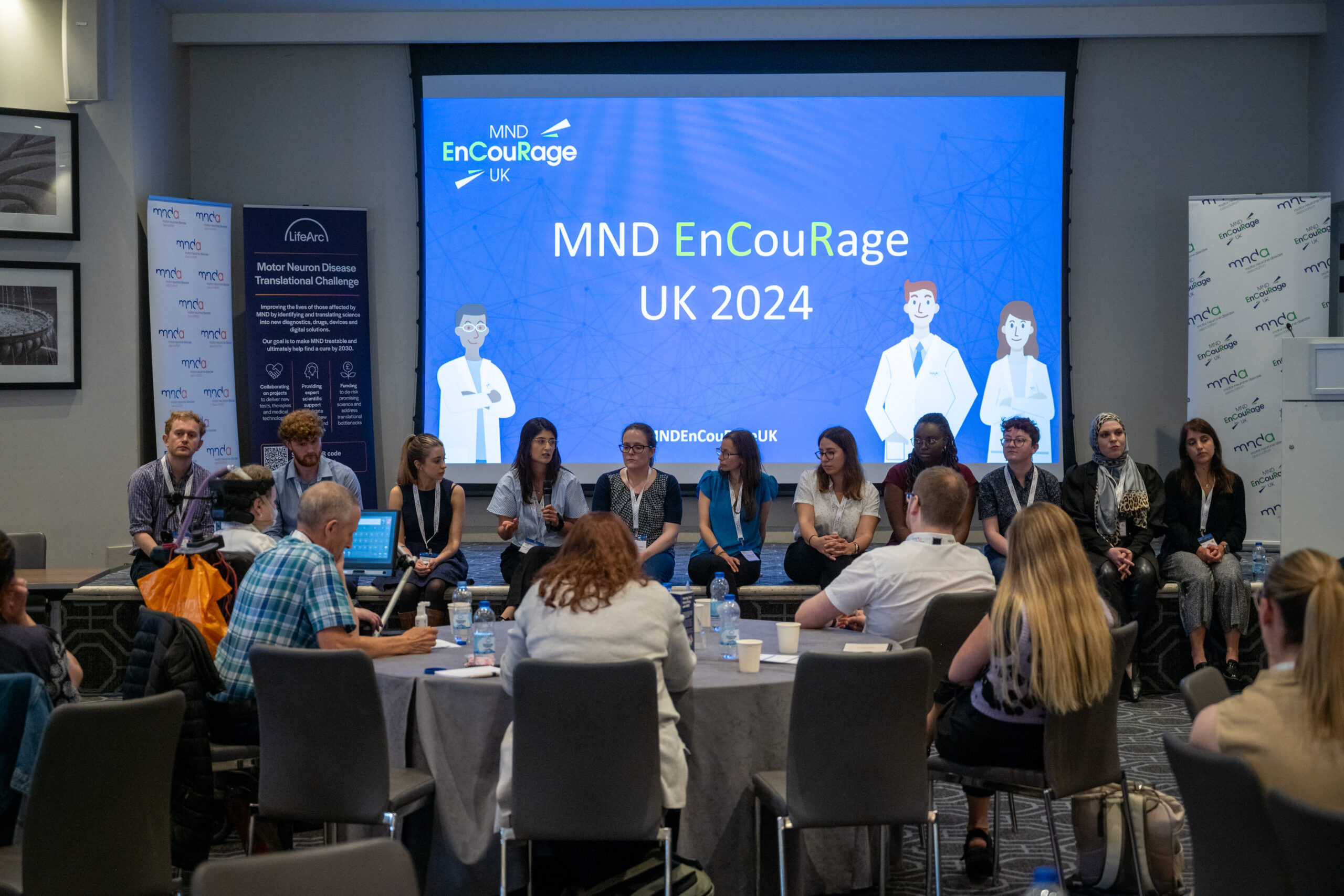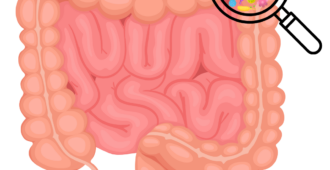In June we hosted the second MND EnCouRage UK event for early career researchers (ECRs) which aims to support them to continue working in the field of MND. The event included lots of talks and workshops from senior researchers to provide tips and advice on moving forward in their careers and help them to develop new skills in areas like presenting their work to non-scientific audiences. We also challenged the ECRs to write a blog to explain their research to the MND community. This guest blog is from Charlotte Gale, one of the ECRs who came to the event this year.

My name is Charlotte, I am a first-year PhD student at the University of Sheffield. I previously did a Biology degree at the University of York, during which I spent a year working at the University of Bradford researching cancer treatments. I am now part of the West lab at SITraN.
I am currently researching the most common genetic cause of MND, which is a mutation in a gene called C9orf72. This mutation is a repeating sequence which produces proteins. These can then accumulate in the central nervous system and are thought to cause toxicity. This mutation can be repeated many times; in healthy people, it can be repeated up to about thirty times, but in people with MND it can be repeated hundreds or even a thousand times. Our lab uses the first animal model to express the mutation at levels seen in people with MND.
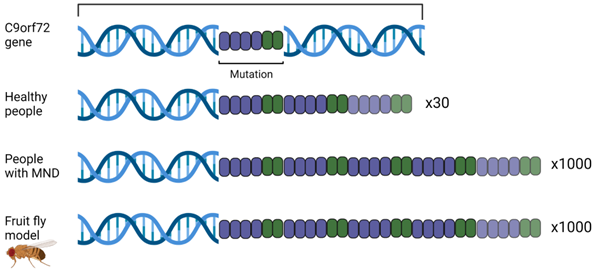
Our animal model is a fruit fly. While a fruit fly may not seem very similar to a human on the surface, there are actually many similarities from the structural level to the nervous system, and down to genetics. Up to 75% of disease-causing genes in humans are also found in flies. Flies have been used as a model in medical research for many years, including for cancer research, and are a common model in neurological research.
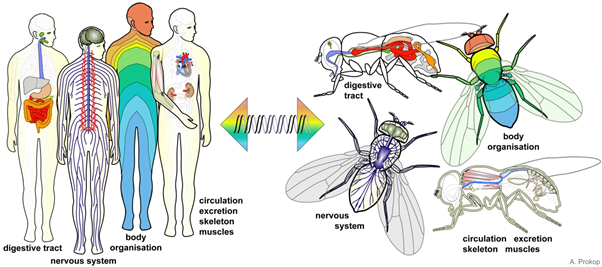
When we zoom in on cells, many functions and structures are found in both flies and humans. One structure is called the cytoskeleton, which can be seen in pink in the cells pictured below. This gives cells their shape and is required for the transport of important materials around the cell. In MND, we can see that this structure becomes disorganised. This leads to cell death, which in our flies causes movement impairment and a reduced lifespan. When we treat our flies with cytoskeleton-stabilising drugs, these impairments and cell death are reduced.
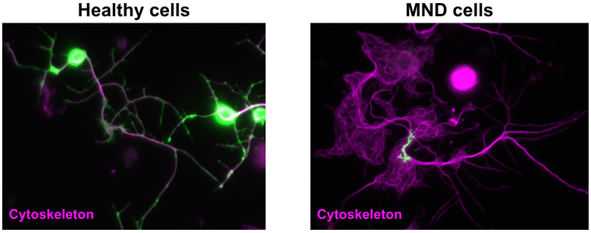
The aims of my project are therefore twofold. First, I am aiming to understand the mechanisms behind disease – how these proteins are disrupting the cell structure, and why this is causing disease symptoms. Second, I am investigating the possibility of treatment either genetically or by repurposing clinically approved drugs to stabilise the cytoskeleton. This, along with understanding the underlying biology, may reveal potential drug targets and open avenues for the development of new therapies for people with MND.
We would like to thank Charlotte for taking the time to write this guest blog about her work and also thank everyone involved in making MND EnCouRage UK 2023 such a success. Charlotte’s PhD project is funded by the MND Association.



